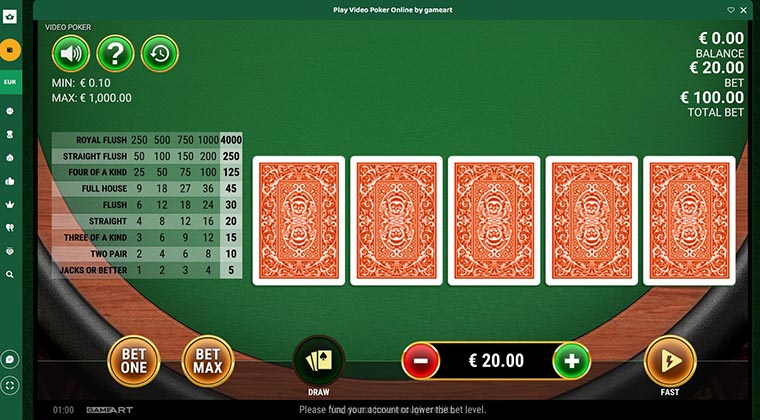Bettors may suffer from analysis paralysis. With so many markets out there, and the ability to put down whatever stakes you please, this is understandable. If you fall into this category, then fear not. We’re here to tell you about one of the best ways to break free from these difficulties – betting systems.
On this page, you’ll learn everything you need to know about different betting systems. We’ll explain what they are in general, how the most popular systems work, and give you tips and advice along the way.
Strategy vs System – Know the Difference
To get the ball rolling, let’s run through what a betting system actually is. Specifically, it can be useful to do so by comparing it to another popular tool – betting strategies.
For starters, we’ll state that these terms are typically used interchangeably. Many punters will follow exactly the same guidance in their gambling, with some calling it a system, and others a strategy.
In general though, we’d say the main difference is how specific those rules are. A betting strategy is more hands-off. It provides guidance in your betting. A betting system, meanwhile, is more rigid. Most commonly, it will tell you exactly how big your stakes should be and how often you should place them.
To help illustrate the difference, let’s use sports betting.
An example of a common strategy would be to back the underdogs, with the thought process being that favorites – especially heavy favorites – tend to be overvalued by the betting public. This is some nice, general guidance for your picks.
A system, however, would be far more specific. Arbitrage betting is a great example. This involves taking both sides of the same market, and – when done successfully, might just turn a profit. It requires you to find markets with very specific odds, however, and to use precisely-calculated stakes.
Can Betting Systems Be Guaranteed?
It’s a common saying that ‘sure things’ don’t exist in gambling. But is that really still true, even when betting systems are being used?
The short answer is ‘yes’, simply because of human error. As mentioned, arbitrage betting is a system literally designed to give you a profit. Even with this, however, people can still easily make mistakes in their calculations and end up losing money.
That said, even the best betting systems rarely claim to ‘guarantee’ a profit. Those that do should be looked at very suspiciously indeed, particularly if they require a payment from you in order to start using them.
Rather, almost all true betting systems simply increase your chances of making money. That might not exactly sound thrilling. In the gambling world, however, you’re always the underdog. Whether through an actual edge in casino gambling, or the bookies’ vig in sports betting, the house always has the advantage. Any steps you can take to significantly boost your odds in the other direction – like implementing a proven betting system, though – may have a major impact on your long-term success.
What You Need to Know About Progressive Betting
Sure, there are a whole lot of betting systems out there, and each one works slightly differently. The majority of the most popular ones, however, are simply alternative takes on progressive betting.
With progressive betting, you start with your basic stake. Your stakes for subsequent bets will then either be bigger or smaller depending on whether the first wager won or lost.
More specifically, there are two types of progressive betting: positive progression, and negative progression.
Positive Progression
With positive progression, you increase your next stake when you win a bet, and decrease your stakes when you lose.
Let’s say you start with $10, win a bet at even odds, and therefore get $20 back. You might then use $15 for the next bet. If you win, you’ve increased your bankroll even more. If you lose, you’re still up $5 overall. Alternatively, if your first bet of $10 loses, you might only place a $5 the next time.
Negative Progression
Negative progression is the exact opposite. With this, you increase your stakes when you lose, and reduce them when you win. Lose $10 on your first bet, for example, and you might wager $15 on your second, to not only reclaim your initial losses but still also turn a profit.
There’s certainly logic to both positive and negative progression betting, which is why they form the base of so many betting systems. Which you prefer will largely depend on your gambling preferences, and whether you’re more aggressive or risk-averse.
9 Betting Systems For You to Try Online
There are dozens and dozens of betting systems out there, and – even now, particularly as new features and markets are added to gamblers’ options – new ones are being created. That said, certain ones are more proven than others, and the nine examples listed below are widely-seen as some of the best.
1-3-2-6 System
1-3-2-6 is a positive progression betting system, which – as you now know – means you increase your stakes as you win bets. It’s also one of the most versatile betting systems out there, and can be used in sports betting and several of the most popular casino table games.
This is a very simple staking system. On your first bet, you wager one unit – let’s say $10. If that wins, you wager three units – so $30. If you keep winning, you bet two then six units respectively, good for wagers of $20 and $60. If you lose at any point, meanwhile, you stop and start again with a single-unit bet.
Crucially, this system only works if you place bets at even odds. This can obviously be done on sports bets, but games with just two options (red/black on roulette, player/dealer in baccarat, for instance) also work.
Pros
- Very easy to understand and execute
- Textbook positive progression system
- Can be used in sports betting and casino gaming
Cons
- Cap on your potential winnings, since the system tops out at six units
Martingale Strategy
The Martingale Strategy (alternatively the Martingale System) has been around since the 18th century. To this day, it remains easily one of the most popular betting systems.
This is a textbook example of a negative progression system, in which you increase your stakes when you lose. In fact, you quite simply double them, then keep doing so until you win. Lose $10 the first time, and you bet $20, then $40, then $80, and so on. Theoretically you’ll win, eventually, and will recover all your losses once you’ve done so. Then, you can simply start betting as normal again.
Assuming you’re betting at even odds or greater each time, then the Martingale Strategy is logical. It’s also pretty versatile, and can be applied to sports betting and simple casino games, like roulette.
The obvious problem, however, is that you have absolutely no idea when your win will actually come. You could easily lose five, even 10 seemingly safe bets in a row, then be in such a big hole that you can’t afford to double your stakes again.
Pros
- Straightforward to execute
- Will – in theory – recover your losses eventually
- Versatile system
Cons
- You don’t know when your win will eventually come
- Strays somewhat into Gambler’s Fallacy territory
Labouchere System
The Labouchere System might not exactly be rocket science, but it’s easily the most complicated we’ve looked at so far. It’s also best explained directly using an example, specifically for a red/black bet on roulette.
You begin by writing down a sequence of numbers. Let’s say you simply write 1, 2, and 3. Your first bet is a sum of the first and last numbers. In this case, it’s 1+3, so $4. Let’s say that bet loses. You then add your most recent stake to the sequence. So, your sequence is now 1, 2, 3, 4. Your next bet will be 1+4, so $5. If you win, you can cross both the numbers you used – 1 and 4 – off from your sequence. This leaves you with 2 + 3, so next you bet $5. If that loses, you add 5 to your sequence. If it wins though, you’ve now crossed off all the numbers, and are finished. You’ve also turned a profit, since you:
- Lost $4
- Won $5
- Won $5
- Overall profit = $6
The Labouchere System does have a reasonable mathematical basis, and – when it can be executed by the book – will lead to a profit. It suffers from the same basic drawback as the Martingale, however, which is that your losing streak could theoretically go on forever. Also, calculating the sequence correctly is subject to human error.
Pros
- Is based on mathematical logic
- Can be used on any even-money bets (such as red/black in roulette)
- Not actually too difficult to execute
Cons
- Somewhat assumes an infinite bankroll
- Can run into problems with house edges (e.g. the ‘0’ segment in roulette)
Paroli Betting System
The Paroli system is an extremely straightforward example of positive progression. It has been used since at least the 16th century, and can be applied to any form of 50/50 gambling (even-odds sports betting, baccarat, red/black on roulette).
The Paroli is basically the inverse of the Martingale. Rather than doubling your stake when you lose, you double it when you win. Crucially, you only do this until you hit three wins. After that, you go straight back to your original stake. If any bet loses, meanwhile, you also go back to your original stake (unlike in the Martingale).
The Paroli is relatively easy to follow: you just double your winning stake a couple of times. Its other main advantage is that it’s a pretty sensible idea, since probabilities suggest that it’s much easier to hit three wins in a row than four. That three-win limit, however, will obviously put a cap on your potential winnings.
Pros
- A straightforward system
- Has a sensible cap of three wins in a row
- Solid basis in probabilities
Cons
- Cap on your winnings, compared to other systems
Fibonacci System
The Fibonacci Sequence involves adding the prior two numbers to get the next one. 1, 1, 2, 3, 5, 8, 13, and so on. This also happens to form the basis for one of the most popular gambling strategies – the Fibonacci System.
The Fibonacci is a negative progression system. Each number represents a ‘unit’ or your chosen stake size. If you lose, you just move to the next number along, and so on until you eventually win. If each unit is $10, for example, then you bet $10, $10, $20, $30, $50, and so on.
Since this is a negative progression system, you will – in theory – get all your money back. Like the Martingale, however, there’s no guarantee when that will actually happen, so you could run up some major losses first. It also only really works at 50/50 odds, although you can apply it to blackjack, too (as long as you don’t split your hand or double your bet).
Pros
- Easy sequence to follow
- Will recover your losses eventually
- Can be used on various forms of gambling
Cons
- Assumes an infinite bankroll
d’Alembert System
The d’Alembert system is designed to be used on 50/50 wagers, such as on baccarat, red/black in roulette, and blackjack. While it is certainly a negative progression system, it actually tackles both sides of the equation – winning and losing wagers – rather than just wins or losses like similar betting systems.
With the d’Alembert, you start by identifying your unit size. Let’s say it’s $10. If you lose, your next stake will be one unit bigger – in this case, $20. When you win, however, you decrease your stake size by one unit.
As noted, this covers both sides of the equation. It has the typical loss recovery tactic of most negative progression systems. It also, however, has a built-in way to help you save some of your profits if you keep winning.
The obvious drawback, as usual, is that the d’Alembert is somewhat subject to Gambler’s Fallacy. It is absolutely possible that you could lose five or more wagers in a row, and then find yourself needing to place some hefty wagers in order to get it all back.
Pros
- Applies to both your wins and losses
- Simple to follow
- Can be used on any 50/50 proposition
Cons
- Could end up placing very big wagers to recover losses
Oscar’s Grind
Oscar’s Grind is not only the most strangely-named betting system we’re looking at here, but also one of the soundest. It is a classic positive progression system, which – as that name suggests – is based on grinding out smaller wins, which eventually add up to a long-term profit.
Oscar’s Grind works by splitting your betting up into ‘cycles’, or ‘sessions’. The aim of each session is to make one unit of profit. Once that has been achieved, the session is over (and you can start a new one, if you so desire).
As usual, you start by identifying a unit size, like $10. If you win immediately, that session is over. If you lose, however, then the system kicks in. If you keep losing, you keep your stake the same size. If you hit a win, however, you increase your subsequent stake size by one unit.
Here’s a very basic example of how that might work. As usual, you’ll be targeting 50/50 betting propositions here:
- Bet $10 – lose
- Bet $10 – lose (-$20)
- Bet $10 – lose (-$30)
- Bet $10 – win (-$20)
- Bet $a20 – win (+$20)
In that scenario, you’ve now made (more than) one unit of profit, and would therefore end the session and start again.
While Oscar’s Grind somewhat suffers from the same ‘infinite bankroll’ problem as systems like the Martingale, that’s actually less of an issue here.
That’s because – since you’re never increasing the size of your stakes after a loss – you know exactly how long you’ll be able to bet before theoretically using all your money. If your bankroll is $500, for example, and your unit size is $10, you know that you could technically sustain 50 losses in a row.
Pros
- Easy to learn
- Only targets steady, achievable profits
- Less aggressive and risky than similar systems
Cons
- Profits may be limited
James Bond Roulette Strategy
007 might have become better-known as a baccarat fan. It’s one of the more popular systems for roulette, however, which bears his name.
Somewhat unusually, this system actually involves using a flat stake size. You don’t increase or decrease your wagers, whether you win or lose.
Specifically, what you do here is cover a large range of the numbers on a roulette wheel. You place:
- 14 units of your chosen stake size on the outside numbers (19-36), which pays out at evens
- 5 units on the inside numbers (13-18), which pays out at 5/1
- 1 unit on 0, which pays out at 35/1
The only numbers you’re not covering, therefore, are 1-12.
James Bons roulette system isn’t exactly foolproof. To make a genuine profit, it relies heavily on at least hitting on the inside numbers, and – in reality – hitting 0 from time to time as well. If you just keep hitting on the outside, or obviously if you lose on 1-12 a few times, you won’t be making any money at all.
This can be somewhat offset by using progressive betting on your losses. This not only encounters the usual problem of losing money before your eventual win, however, but also makes a fairly complicated system even trickier.
Pros
- Gives some guidance to your roulette betting
- Can lead to some very big profits
- Can be paired with a progression betting system
Cons
- One of the less reliable betting systems out there
- Not the most straightforward system to execute
Kelly Betting
The Kelly Betting System is based on the Kelly Criterion. This is actually popular not only in gambling, but in financial investment too.
The Kelly Criterion is used to calculate your stake size. Specifically, when calculated correctly, it will give you a typical stake which – in theory – you can keep using without going broke.
Here’s the basic formula for you:
f = (b x p – q) / b
In this equation:
- f = stake size
- b = total decimal odds of the wager in question (which always add up to 1)
- p = your probability of winning
- q = your probability of losing (which is just 1 – p)
Let’s say you’re placing a wager which you have a 55% chance of winning. In this case, the equation would be:
Stake size = (1 x 0.55 – 0.45) / 1
In this case, your stake size would equal 0.10 of your total bankroll (or 10%). That’s how much you should bet, therefore, on this market with implied odds of 55%.
When done correctly, the Kelly Criterion is a very sensible way to manage your bankroll, which should lead to steady long-term profits. One of its biggest advantages is that it can be applied to literally any betting situation, as long as you know what the probabilities are (and bearing in mind any table limits for that particular game, of course).
Pros
- Incredibly versatile system
- Helps tell you what your stake size should be
- Should help to reduce your losses
Cons
- Still subject to the inherent randomness of gambling
What Is Gambler’s Fallacy?
‘Gambler’s Fallacy’ is a phrase you’ll inevitably hear if you spend long enough betting. Since it’s often used incorrectly though, and rarely actually explained, you might not be quite sure what it really means.
The Gambler’s Fallacy also happens to be one of the most dangerous threats to your chances of success in betting.
Also known as the Monte Carlo Fallacy, Gambler’s Fallacy basically means you think that the prior results will have some impact on the future ones. This is something you hear about often – in books, films, online – and you may well have thought it yourself.
A classic example is being ‘on a hot streak’. You win a few bets in a row, and therefore feel as if you’ll win the next one. When on a ‘cold streak’, meanwhile, you might feel as if you’re ‘due a win’ soon.
Neither actually exist. This isn’t basketball, in which you can get ‘in the zone’. It’s gambling, in which you never, ever have complete control over the outcome. There are no mystical forces for or against you. All you should ever be doing is playing the probabilities, and – while bearing them in mind – balancing your risk and reward.
Understanding this is arguably the key to responsible gambling. We don’t want to come across as party-poopers, and take all the fun out of betting. But the fact is that Gambler’s Fallacy is one of, if not the most common way for bettors to get into financial trouble, and must be avoided at all costs.
Strategy Guides for Your Favourite Games & Sports
Obviously, there’s no ‘one size fits all’ betting method which will guarantee your success across all forms of gambling. There are simply too many differences, firstly between casino and sports betting, and then in the many subcategories within those broader sections.
Let’s look at a few of the most popular betting avenues of all, and run through the top gambling schemes in each case.
Recommended Betting Strategy for Poker

Online poker is enormously popular, with the industry currently worth around $86 billion. Unlike many casino games, the likes of Texas Hold’em and Five Card Draw represent a genuine mixture of luck and skill. A combination of this, and the fact that you’re competing directly against other human players, means poker is an endlessly entertaining and challenging game.
The unpredictability of poker, however, means that betting systems aren’t really applicable for it, since these systems rely on defined probabilities. You’re better off following poker betting strategies instead, particularly those which guide your stake sizes in-game.
Best Betting Strategy for Blackjack
Blackjack is the definition of a classic casino game. While it doesn’t really involve the direct competition of poker, it boasts a similarly fascinating blend of skill and luck. You can’t affect the cards you’re dealt, nor what the dealer ends up with. But you can certainly control your betting, and how you play your cards, to maximize your chances of success.
Many of the betting systems we’ve covered above are applicable for blackjack. The Fibonacci and d’Alembert negative progression are the best betting systems for Blackjack.
Video Poker Betting Strategy
Video poker is actually a very different game type to regular, player-vs-player poker. The games move much faster, for one. More importantly, the same variants might be featured, but – since you’re ‘competing’ with an algorithm-based computer, rather than directly against other people – there’s less unpredictability.
With provably-fair video poker, in fact, you should be able to view the straightforward probabilities of success. While these almost certainly won’t be 50/50, and therefore not compatible with most betting systems, you will be able to use the Kelly Criterion to decide your stake sizes each round.
Betting Strategy for Baccarat

This is another of the most popular table games out there. Its status as James Bond’s favorite game might have given it a classy aura, but – in reality – this is a very simple guessing game. You and the dealer are each dealt a hand, and you guess which is better.
This very predictability, however, makes it a much easier game for betting strategies than something like live poker. In fact, since you only have two genuine options (betting the tie isn’t generally advised), most systems we’ve recommended here will be applicable, with the 1-3-2-6 System being particularly suitable.
Video Slots Betting Strategy
Within the broad category of video slots you’ll find a ridiculous amount of variety. Many popular online casinos boast literally thousands of different titles, all with slightly different themes, RTP’s, features, symbols, bonuses, and so on.
As with poker, however, there’s too much unpredictability here to make video slots compatible with most betting systems. Instead, we’d recommend checking the RTP for a slot before playing it, then using the Kelly Criterion to decide your stake size.
Sports Betting Systems

Obviously, this is another general category in which there’s an enormous amount of variety. Nowadays, most sportsbooks will have 20 different markets at the very minimum, with this number often swelling to 30+. Then, within each sport, you’ll find very different bet types and competition structures.
All told, this means there are few ‘all-purpose’ sports betting systems out there. There are simply too many differences between the markets. Instead, you’re generally better off seeking either a looser strategy (like targeting underdogs), or finding a more specific system for the particular sport you’re interested in.
That being said, if you’re happy to exclusively seek out even-odds wagers, you’ll be able to use most of the betting systems we’ve reviewed. Also, the Kelly Criterion is a great way to work out your stake size for any wagers you place.
Getting Guidance In Your Gambling
To be completely clear, no betting system is completely foolproof. Most fall foul of Gambler’s Fallacy, to at least some extent. Even those that don’t are still subject to human error.
That being said, they can still be valuable. That’s because they give you guidance in your betting which you wouldn’t otherwise have. Most often, using these systems tells you exactly how much to wager each round, or for each bet. They’re particularly useful for 50/50 propositions, but some systems – like the Kelly Criterion – can be applied to basically any gambling you undertake.


